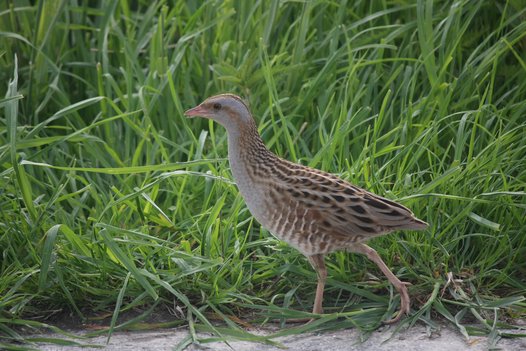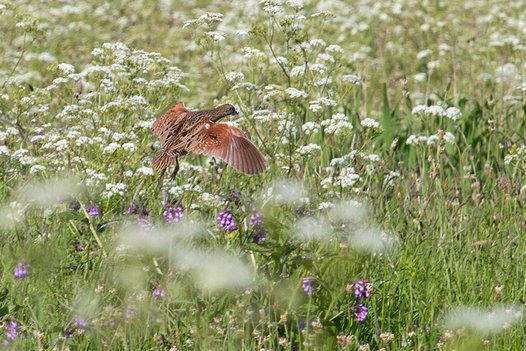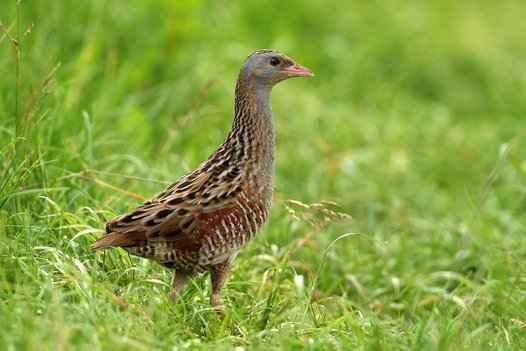Meadow birds
Corncrake
Secret and nocturnal
Corncrakes are typical meadow birds. They are excellently camouflaged and live hidden in tall grass and herbaceous vegetation. Corncrakes are diurnal and nocturnal solitary birds, calling mainly at dusk and at night.
They search for their food on the ground or pick it off plants. Their menu consists mainly of insects and other small animals, such as beetles, spiders, earthworms and small snails, which they capture with their short, powerful beak. Special delicacies in the African wintering sites are termites and dung beetles. Exceptionally, they also eat seeds.
Profile
| Scientific name | Crex crex |
| Call | Crex … crex … crex … crex |
| Food | Small invertebrates, rarely seeds |
| In breeding grounds | May to August |
| Clutch size | 7–12 |
| Broods per year | 1–2 |
| Population trend in Europe | Declining |
More information
Find out more about the Corncrake.


